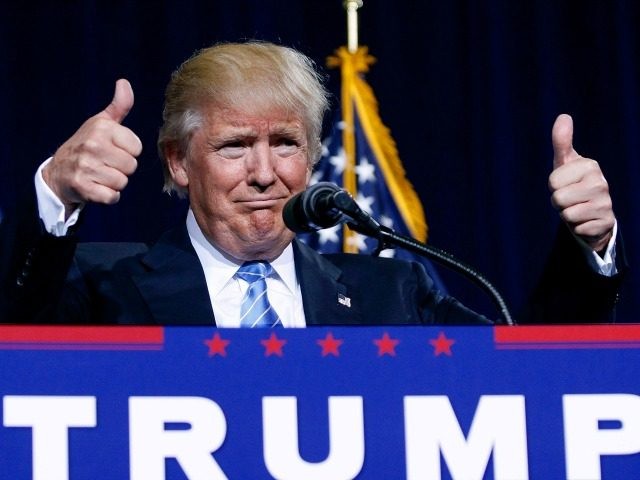Donald Trump gets a crucial two-point bounce when third-party presidential candidates combine for more than 10 percent in multiple polls, according to a Breitbart News analysis.
Those two points could provide the critical margin to Ohio, Florida, Virginia, and North Carolina.
The 10-percent threshold was reached five times in the 20th Century (1912, 1924, 1948, 1968, and 1992). Ross Perot got 19 percent in 1992 and 8.4 percent in 1996. John Anderson got 6.6 percent in 1980 against Ronald Reagan, and libertarian Ed Clark got 11.7 percent in Alaska in the 1980 election.
There are three reasons why a path to a combined double-digit showing for non-major party nominees is much easier in 2016:
- The 10 percent can come from any combination of three credible candidates; Gary Johnson is backed by Purple PAC commercials, Evan McMullin by Mitt Romney’s network, and Jill Stein can pull from Bernie Sanders supporters.
- In all past elections, fewer than 10 percent of respondents told pollsters they did not have a favorable view of either the Republican or Democratic nominee, according to Monmouth polls. This figure skyrocketed to 35 percent this year — meaning more than one-third of all voters do not have a favorable opinion of either Clinton or Trump. In summary, the other candidates can appeal to 35 percent to try to get above 10 percent.
- Also, the younger and more left-wing voters seem to be more willing to be guided by their own ideals, and so may be less willing than prior third-party voters to give up on their losing candidate in the final stretch, and instead vote for who they regard are the lesser of two evils. They may choose to vote in the hope of building a viable alternative to the two traditional parties for future elections.
The often-quoted two-way polling results averaged by Real Clear Politics now have Hillary Clinton with a 4.1 percent advantage. That advantage assumes that the third-party votes will disappear in the final stretch.
But three of the four most recent polls at the site show either Donald Trump or Hillary Clinton are just one point ahead in a two-way race — meaning that a strong third-party showing would give Trump a win in all three of the four.
In the four most recent RCP polls in which more than 1o percent of respondents picked another candidate (IBD, Fox News, USA Today, and NBC), Trump gained an average of two points when respondents were forced to pick either Clinton or Trump.
However, in the four most recent polls in which 10 percent or less supported another option (Reuters, Economist, PPP, Monmouth), Trump’s didn’t gain anything when the respondents were forced to choose either Trump or Clinton.
The most recent four-way state polls show Trump ahead by two points in North Carolina, down by one point in Virginia, tied in Ohio, two points down in Florida. So a shift of just two points — whatever the cause — could determine who goes to the White House.

COMMENTS
Please let us know if you're having issues with commenting.